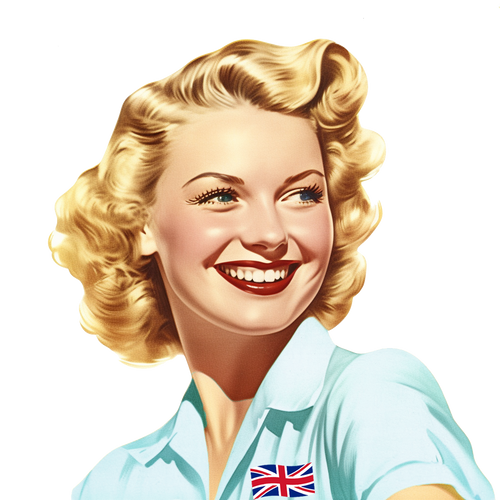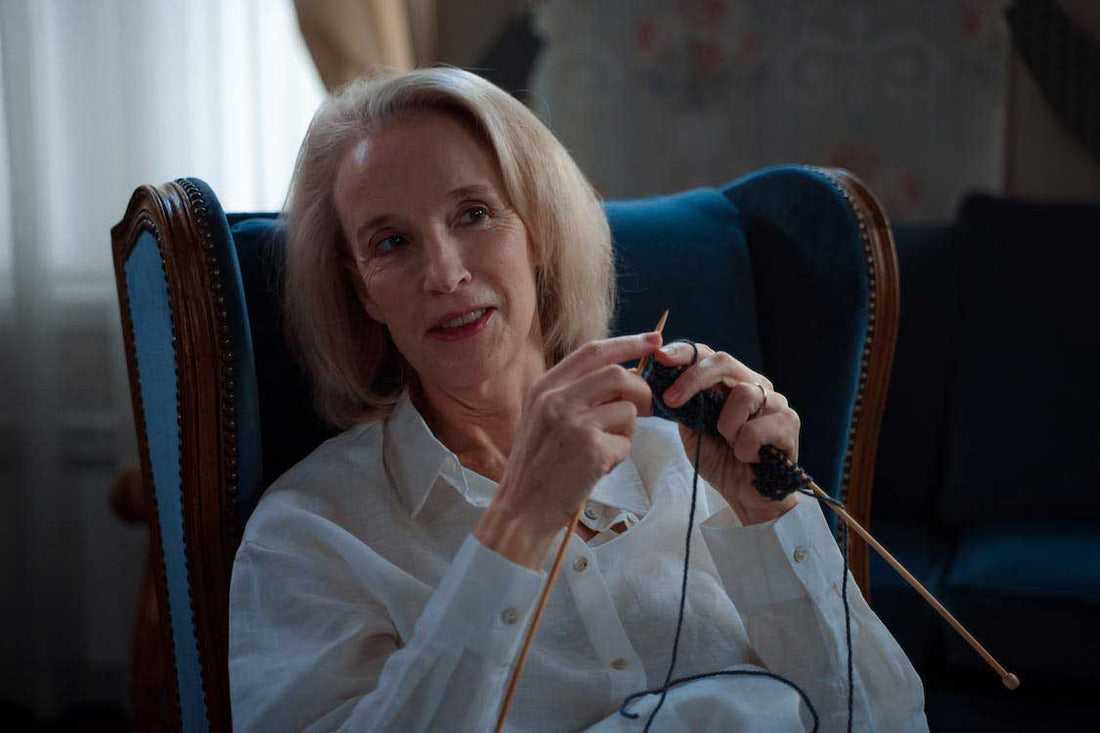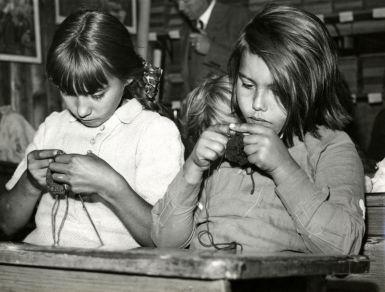Knitting is a popular craft that involves creating fabric by interlocking loops of yarn with two or more knitting needles. It's a versatile craft that can be used to create a variety of items such as hats, scarves, sweaters, and even home decor. Knitting has become a popular hobby and pastime for many people around the world. It's not only a way to create something unique and personal, but it's also a relaxing and therapeutic activity.
The purpose of this blog post is to explore the history of knitting and its origins. Knitting has a rich and fascinating history, and understanding where it came from and how it has evolved over time can deepen our appreciation for this beloved craft. From ancient times to modern day, knitting has played an important role in the lives of people around the world, and this blog post will delve into the details of this craft's origins and evolution. So, let's dive into the history of knitting!

"Lady Hendrie in a sitting pose, knitting.", 1916.
Ancient Origins

Textile, two fragments of knitting c.323-256 BC, Yale University Art Gallery
Knitting is a craft that has been enjoyed for centuries, with origins that are still a topic of debate among historians. Some theories suggest that knitting originated in the Middle East, while others suggest that it may have begun in ancient Egypt. Despite the differing opinions, it is clear that knitting has a long and rich history.
One of the earliest known examples of knitting dates back to the 300CE in Egypt. A striped hand-knit sock was found in a tomb in the city of Antinoopolis and is now held in the British Museum, this discovery gave historians an insight into the skill of ancient knitters. These socks were knit using a technique known as "knotless knitting," which involves creating loops using a single needle. The yarn was created using natural plant-based dyes, made from flowers.
Another theory on the origins of knitting suggests that it may have originated in the Middle East, particularly in what is now modern-day Iran. Some historians believe that the first knitters used a technique known as "flat knitting," which involves creating fabric by knitting rows back and forth.
Regardless of its origins, knitting has remained a popular craft throughout history. In medieval Europe, knitting was primarily done by men and was used to create practical items such as clothing and blankets. As time went on, knitting became more accessible to the general public and was eventually embraced by women as a form of relaxation and creative expression. Today, knitting remains a popular hobby and is enjoyed by people of all ages and genders.
Medieval Knitting

Knitting Madonna, The Buxtehude Altar by Meister Bertram, circa 1400-1410
During the medieval period, knitting became increasingly popular in Europe. It is believed that the technique was introduced to the continent by Arab merchants and travelers, who brought with them knitted garments from the Middle East. Over time, knitting spread throughout Europe and became especially popular among the upper classes.
Knitting in the Industrial Revolution

Aberdeen Art Gallery , Public domain, via Wikimedia Commons
The Industrial Revolution brought significant changes to many aspects of life, including the world of knitting. With the introduction of new manufacturing technologies, textiles could be produced on a massive scale, and knitting became an even more accessible hobby. In the early 19th century, many people started to knit as a form of relaxation and creativity, and knitting patterns were widely distributed in magazines and books. According to the V&A, hand-knitting was prominent in the knitwear section of the Great Exhibition held in Britain in 1851, with remarkable proficiency demonstrated in submissions from children and disabled adults, including unusual entries such as a knitted landscape and a shawl with a prayer for the Houses of Parliament.

Young Girl Knitting (Portrait of Jennie Walters?), 1860
As demand for textiles grew, knitting machines were introduced to speed up the production process. The first knitting machine was invented by William Lee in the late 16th century, but it wasn't until the 1800s that knitting machines became widespread. These machines allowed for faster, more efficient production of knitted goods, and helped to meet the increasing demand for knitted clothing and accessories.
The development of knitting machines also led to the rise of the knitting industry, with many factories employing large numbers of women to work the machines. However, this also had some negative consequences, such as poor working conditions and low wages. Despite these issues, knitting remained a popular pastime for many people, and the availability of affordable knitting supplies and patterns made it more accessible than ever before.
Espionage - Knitting during the Second World War.
Attribution: Spaarnestad Photo, via Nationaal Archief., Attribution, via Wikimedia Commons
During World War II, knitting became an essential activity for women on the home front, as they knitted socks, hats, gloves, and other items for soldiers fighting overseas. Knitting was not only a way to provide warm clothing for soldiers, but it also helped to boost morale on the home front. Knitting groups were formed in communities across the country, and women would gather to knit and socialize while supporting the war effort.
In addition to providing warm clothing for soldiers, knitting was also used as a way to convey messages in code during the war. The Belgian resistance used knitting patterns to pass along messages to the Allies, with specific patterns and stitches representing different letters and words. This secret code allowed resistance members to communicate important information without being detected by the enemy. Knitting patterns were also used by the British intelligence agency MI9 to send messages to soldiers in prisoner of war camps, as the patterns would include messages hidden within the knitting instructions.
Knitting in the Modern Day
Lauren "Lolly" Weinhold, CC BY 2.0, via Wikimedia Commons, Check out her blog here
Knitting has experienced a resurgence in popularity in recent years, becoming a beloved pastime for people of all ages. Its contemporary uses have expanded to include not just clothing but also home decor, art, and even activism. Knitted items are often handmade, making them a unique and personalized addition to any wardrobe or living space. In the world of fashion, knitting has become a prominent trend, with designers incorporating knitted pieces into their collections. Knitted fabrics can be found in everything from sweaters and scarves to dresses and pantsuits.
The popularity of knitting as a hobby can be attributed to its therapeutic qualities. Knitting among other hobbies has been linked to reduced stress and a study published in the British Journal of Occupational Therapy found that knitting can improve fine motor skills and hand-eye coordination, particularly in older adults. The study also found that knitting can help reduce feelings of isolation and loneliness, which can have a positive impact on mental health. anxiety, improve motor skills, and even lower blood pressure. It's also a creative outlet that allows people to express their individuality and make unique, handmade items. Knitting groups and communities have formed online and in-person, creating a sense of camaraderie and shared passion for the craft.
In addition to its therapeutic benefits, knitting has also become a tool for activism. Knitters have used their craft to raise awareness and funds for various causes, such as breast cancer research, LGBTQ+ rights, and environmental issues. Knitted pieces can be seen in protests and marches, showing that the craft has the power to bring people together and make a statement.
Arjen Noordeman, although the copyright is owned by Mass MoCA., CC BY-SA 4.0, via Wikimedia Commons
Conclusion
In conclusion, knitting has a long and fascinating history, spanning cultures and time periods. From its origins in the Middle East and Egypt to its popularity in medieval Europe and the Industrial Revolution, and its resurgence as a popular hobby today, knitting has played an important role in human culture. Knitting has also been linked to various health benefits, including reduced stress and anxiety, improved motor skills, and lower blood pressure. With its versatility, portability, and therapeutic qualities, knitting continues to be an enduring and beloved craft. Whether used for practical purposes such as clothing or blankets, or simply as a relaxing pastime, knitting remains a cherished part of many people's lives.





